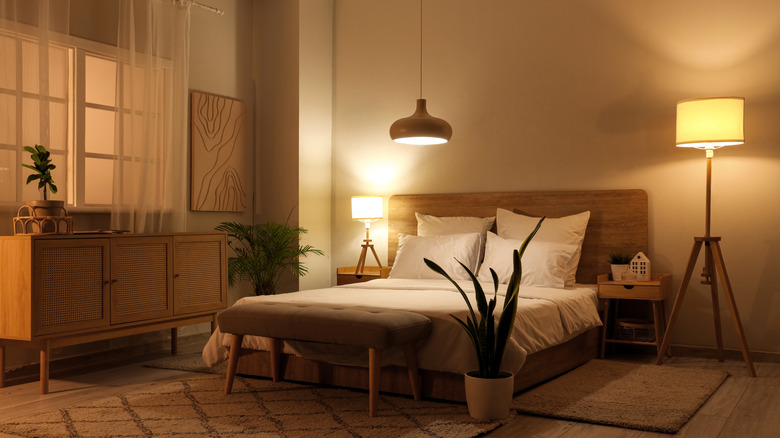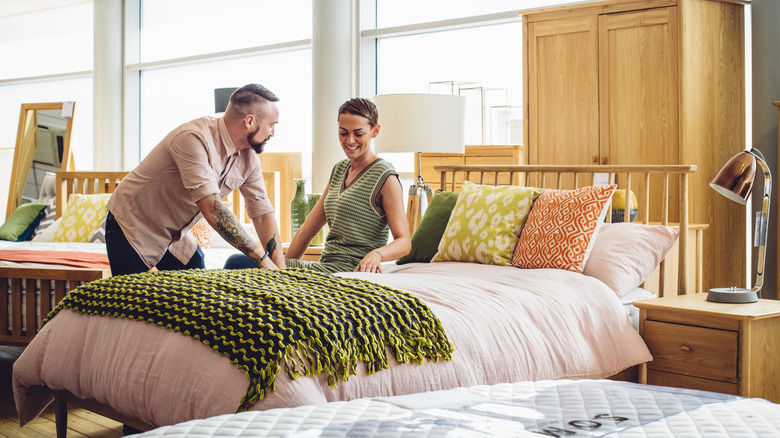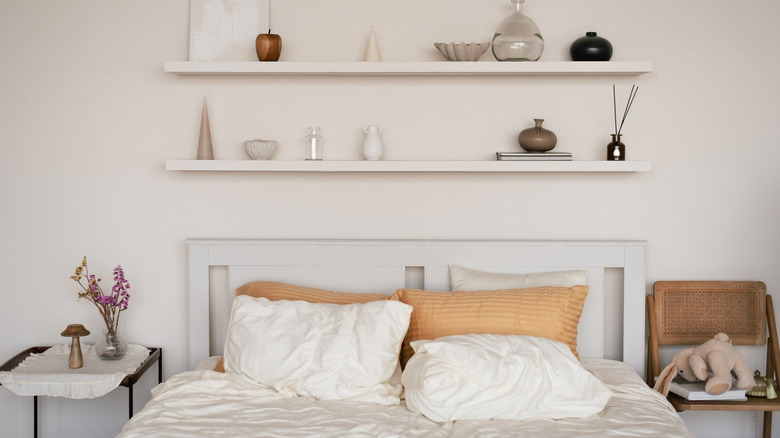How To Avoid Matching Bedroom Sets While Maintaining A Cohesive Look
Matching bedroom furniture sets aren't for everyone. Whether you're shopping on a budget or just love a more eclectic and collected vibe, there are plenty of good reasons you may not want to purchase a furniture set. Bedroom design trends will come and go, but selecting pieces you love that do not adhere too closely to one design or trend can help create a more timeless room. However, achieving the right balance between matchy-matchy and a collection of random, unrelated pieces of furniture can be challenging. Luckily, Erika Dale, interior designer and founder of Erika Dale Interior Design, is sharing her tips for achieving a cohesive look exclusively with House Digest readers.
"One of my biggest design pet peeves is matching bedroom furniture sets because, too often, the resulting aesthetic ends up giving major discount furniture store vibes," says Dale. The key to striking the right balance, she says, is to think about the finishes. She adds, "The layered mix of materials is generally a far more elegant and sophisticated approach to designing a space than just plopping half of a furniture showroom in your home." An easy rule of thumb is to introduce other materials, textures, or colors on at least one of the major elements in the room — the bed, dresser, or nightstands. That's just the beginning, so let's dive into Dale's expert advice.
How to decorate an eclectic bedroom
There may be no faster way to a dated look than buying a matching set of bedroom furniture. "Spaces that use a mix of materials, finishes, textures, and styles tend to be so much more impactful, curated, and balanced than one with too much of a good (or not so good) thing," says designer Erika Dale, who spoke exclusively to House Digest. But if you can't just go to a showroom and say, "I want that!" then what are you supposed to do?
To start, Dale advises to pick a piece that you love. With that as a starting point, you can follow a few simple rules to move forward. "Repeating materials in different ways throughout the space is not only encouraged, but necessary to make the space feel cohesive, but adding enough variation also maintains balance," says Dale. She instructs to call back to the mix of finishes, colors, or textures on your main furniture pieces to echo in other areas.
The leg of a bench, a picture frame or mirror, textiles, and upholstery are all places to add in those little repetitive touches that create a well-balanced design. "This way, everything feels like it belongs but each large case good brings its own personality and layer of design interest," says Dale. Check out our ultimate guide to eclectic decor to learn more about the fine art of mixing and matching.
Nightstands: To match or not to match?
As we've already learned, nightstands are among the three major elements in a bedroom, and in most bedrooms, there will be two of them. Selecting a nightstand for your bedroom can be complicated, with many factors to consider — and if you are not buying a set of furniture, one of the those factors is deciding whether or not your nightstands should match. "Generally, I tend to prefer identical nightstands, as they create a very satisfying symmetry to flank the bed," says Erika Dale in her exclusive interview with House Digest.
However, there are a number of reasons you may opt to go with a mismatched pair. Perhaps you have space constraints or your partner has different needs in a nightstand than you do. Whatever the case may be, if you're going to have different nightstands, keep in mind the rules for creating a harmonious design. "The art of selecting a pair of cohesive and balanced yet different mismatching nightstands can be very tricky, but can add a ton of eclectic visual interest to a space when done right," says Dale. Opting for similar finishes, shapes, or textures ensures the pieces speak to one another and look like they belong together without being identical.


